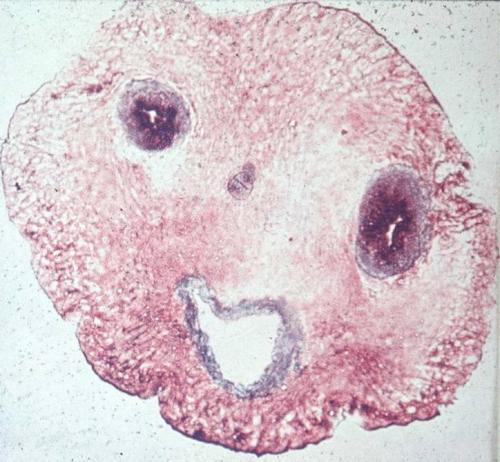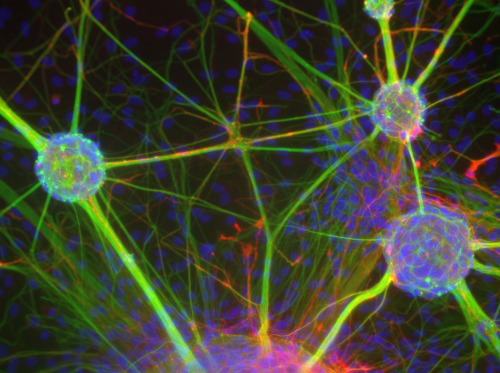Отличная новость!!! http://www.biologynews.net/archives/2009/03/12/cells_get_two_chances_not_just_one_to_fix_their_mistakes.html
Оказывается, клетки имеют не один шанс исправить ошибки!!!
Cells have two chances to fix the same mistake in their protein-making process instead of just one – a so-called proofreading step – that had previously been identified, according to new research.
Proteins are essential to life and do most of the work in cells, so avoiding mistakes during their production is a critical way to prevent a variety of harmful conditions that result when mutations cause damage or when cells die.
Better knowledge of the mechanism behind these occasional mistakes could increase understanding of various disease processes, especially in neurodegenerative disorders, some of which scientists suspect are associated with mutated proteins, Ohio State University researchers say.
The discovery of this second step also gives drug-makers a new target to consider, especially in the development of antibiotics. Drugs designed to interfere with the enzymes that make, find and repair the mistakes during protein production could be powerful agents in stopping bacterial cell growth.
One key enzyme involved in cell quality control is called phenylalanyl-tRNA synthetase (PheRS). This enzyme's job within the cell is to correctly select one of the amino acids that will be strung together into a molecule to make a protein.
"We're describing a pretty simple process where the cell says, 'I think I'll have one more look at that,'" said Michael Ibba, senior author of the study and an associate professor of microbiology at Ohio State. "It looks at the building blocks and checks that they're right before it makes the protein."
The research is published in the March 13 issue of the journal Molecular Cell.
In past examinations of this mechanism in the cell, Ibba's lab had identified a single quality-control measure cells take as they produce proteins. The researchers initially thought that this proofreading step was the only check during the protein-making process.
"There was a step at which we thought, now it's done, and if a mistake gets through here, it's irreversible and is going to end up as a mistake. But it turns out there is yet another step at which the cell has another look. It's checking itself," Ibba said. "The bottom line is we must have been missing something."
Previous research has suggested that cells, on average, make one error during protein production for every 10,000 amino acids strung together.
"What we do is try to find out where that error rate number comes from," said Ibba, also an investigator in Ohio State's Biochemistry Program and its Center for RNA Biology. "Understanding where the mistakes come from means you can try to predict conditions that will either raise or lower the frequency of mistakes."
Within the cell, PheRS is one member of a family of enzymes responsible for selecting amino acids that will be attached to an adapter molecule that facilitates the protein-building process. The amino acids must be attached to the appropriate adapter to ensure the genetic code is deciphered properly.
Ibba's lab has been studying this enzyme's activities for years. After observing over time what appeared to be a second quality-control step, the scientists had to devise a method they could use to prove the second step occurred. So the researchers first generated the mistake synthetically, and then introduced other enzymes that would normally be present later in protein production to see if they could then observe the second quality check.
The researchers discovered that the same enzyme that makes the mistake, PheRS, also checks and cleans up after itself in a process that removes the incorrect amino acid and attaches the correct one in its place. And the enzyme can do this even after an initial check misses the mistake and allows the protein-building process to continue.
"The enzyme is two catalysts, one that can make the mistake and one that can correct the mistake. It can let the mistake go and grab it back. Nothing tells it to do this. It figures it out on its own," Ibba said.
These experiments were conducted using E. coli bacterial cells, which are a preferred model for many cell studies. But understanding this mechanism can be particularly useful in the design of antibiotics because many such drugs specifically target the protein-production process to halt the growth of bacteria.
"We're trying to understand the process which in the past has proven to be very fruitful as a target for antibiotics," Ibba said. "The hope is when you target protein synthesis in general, either you stop it completely or make the process too inaccurate so the cell can't grow."
This very same quality-control process, involving a different enzyme, is being targeted in the development of an antifungal agent that is currently being tested in humans to treat toenail fungus, Ibba noted.
Even with this second editing step identified, there is still plenty to learn. For example, these enzymes do not act alone. Their interactions with other enzymes in the cell affect their behavior. And exactly what happens when mutant proteins slip through the quality-control system remains poorly understood, as well.
"Sometimes mistakes do get in, and that's what we're still uncertain about. Even in some neurodegenerative disorders, we can see that there are almost certainly errors, but the frequency is impossible to know at present," Ibba said. "If we know more about the mechanism, then if we find mutations, we'll have a much better chance of finding what the consequences of those mutations are."
Source : Ohio State University











0 +:
Dí lo que piensas...